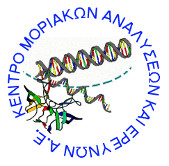CYCLIN D1
Cyclin D1 is a member of the cyclin protein family that is involved in regulating cell cycle progression.Given that many humancancers happen in response to errors in cell cycle regulation and in growth factor dependent intracellular pathways, involvement of cyclin D1 in cell cycle control and growth factor signaling makes it a possible oncogene.In cases of sarcomas, breast cancer, colorectal cancers and melanomas, cyclin D1 overproduction is noted.The expression of cyclin D1 is regulated by a coordinated cascade of intracellular events in response to extracellular signaling.In organized epithelia, the decreased expression of cyclin D1 after proliferation is necessary for ordered differentiation.The proper balance of proliferation and differentiation is crucial for the maintenance of tissue homeostasis.Deregulated cyclin D1 expression promotes genetic instability in vitro and tumorigenesis in vivo.Overexpression and/or amplification of the cyclin D1 gene, is reported in 35%–65% of patients with HNSCC and is associated with poor prognosis.
Endocrine therapy is the most effective treatment for women with hormone receptor–positive breast cancer.For more than 20 years, the antiestrogen tamoxifen has been the established standard of care in adjuvant endocrine therapy.In the adjuvant treatment of endocrine-responsive breast cancer, 5 years of tamoxifen almost halves the annual recurrence rate and reduces the annual breast cancer death rate by a third . Although aromatase inhibitors have recently been shown to be even more effective, tamoxifen remains an important part of the endocrine treatment armamentarium and is still the only option in many areas around the world.Tamoxifen therapy is effective in many patients but de novo and acquired resistance remains a major problem.A considerable fraction of patients do not respond to tamoxifen despite having estrogen receptor–positive tumors.These patients may need other therapeutic interventions.Therefore, the ability to predict outcome of tamoxifen treatment should significantly improve the management of early-stage breast cancer. Besides the central role in cell cycle regulation, cyclin D1 directly affects the estrogen receptor and may be involved in response to estrogens and antiestrogens.Cyclin D1 has been shown to bind to the estrogen receptor and to activate the receptor in a ligand-independent fashion.In vitro studies have linked tamoxifen resistance to the expression of cyclin D1 in cell lines.Overexpression of cyclin D1 is observed in ∼50% of breast cancer specimens and the corresponding CCND1 gene is amplified in 15%. In several clinical studies, early relapse and shorter survival were observed in women with cyclin D1–positive breast cancer who received tamoxifen treatment.


